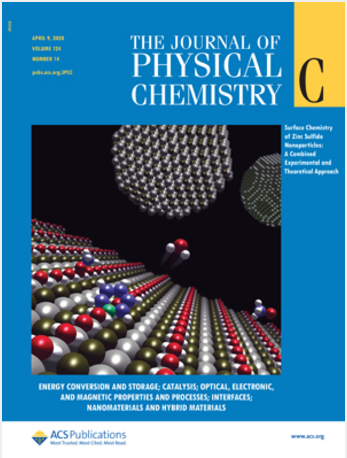利用Co-CsPbBr3量子点中化学键的磁致变形测量弱磁场的新方法
IF 3.3
3区 化学
Q2 CHEMISTRY, PHYSICAL
引用次数: 0
摘要
弱磁场检测技术的研究对推动生物科学、航空航天、芯片制造等领域的发展具有重要意义。然而,弱磁探测仍然面临着探测器体积小、探测规模有限等问题。基于室温铁磁理论、分子极化理论和化学键振动水平理论,合成了Co-CsPbBr3胶体量子点复合磁性材料,用于弱磁场的探测。该合成涉及将Co2+混合到CsPbBr3中,CsPbBr3是一种具有活化离子的全无机钙钛矿。随后,设计了一个弱磁场测量系统,包括工作介质样品和振动电平检测光路。通过对多组数据集的采集、比较、处理和分析,建立了不同磁场大小下的Stokes位移函数模型,测量了弱磁场强度范围Pitsla (pT)。本文提出的Pitsla弱磁场测量系统为非接触式弱磁场测量方法的发展和弱信号智能化低维测量应用的推进提供了参考。本文章由计算机程序翻译,如有差异,请以英文原文为准。

New Measurement Method for Weak Magnetic Fields Using Magnetically Induced Deformation of Chemical Bonds in Co-CsPbBr3 Quantum Dots
The research on weak magnetic field detection is of great significance in advancing the development of bioscience, aerospace, chip manufacturing, and other fields. However, weak magnetic detection still faces some problems, including the small size of the detectors and the limited detection scale. To contribute to the detection of weak magnetic fields, the Co-CsPbBr3 colloidal quantum dots composite magnetic material was synthesized on the basis of the theory of room temperature ferromagnetism, molecular polarization, and the vibration level of chemical bonds. The synthesis involved mixing Co2+ into CsPbBr3, an all-inorganic perovskite with activated ions. Subsequently, a weak magnetic field measurement system was devised, comprising working medium samples and a vibration level detection optical path. Following the acquisition, comparison, processing, and analysis of multiple data sets, a Stokes displacement function model was established under different magnetic field sizes, and the weak magnetic field intensity range of Pitsla (pT) was measured. The Pitsla weak magnetic field measurement system proposed in this paper provides a reference for the development of noncontact weak magnetic measurement methods and for the advancement of intelligent and low-dimensional weak signal measurement applications.
求助全文
通过发布文献求助,成功后即可免费获取论文全文。
去求助
来源期刊

The Journal of Physical Chemistry C
化学-材料科学:综合
CiteScore
6.50
自引率
8.10%
发文量
2047
审稿时长
1.8 months
期刊介绍:
The Journal of Physical Chemistry A/B/C is devoted to reporting new and original experimental and theoretical basic research of interest to physical chemists, biophysical chemists, and chemical physicists.
 求助内容:
求助内容: 应助结果提醒方式:
应助结果提醒方式:


